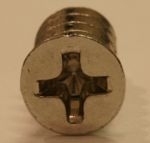- BY Admin
- POSTED IN Articles, Fără categorie
- WITH 0 COMMENTS
- PERMALINK
- STANDARD POST TYPE

Henry F. Phillips (1890 – 1958), a U.S. businessman from Portland, Oregon, after whom the Phillips-head screw and screwdriver were named.
STORE OF INVENTIONS & TECHNOLOGIES FOR SALE : https://worldwideinvention.com/store/
The importance of the crosshead screw design lies in its self-centering property, useful on automated production lines that use powered screwdrivers. Phillips’ major contribution was in driving the crosshead concept forward to the point where it was adopted by screwmakers and automobile companies.
The design was purposely made to cam out when the screw stalled, to prevent the fastener damaging the work or the head, instead damaging the driver. This was due to the relative difficulty in building torque limiting into the early drivers. (Compare this with the anti-‘cam out’ designs that are now prevalent from the latter half of the 20th century.)
Although he received patents for the design in 1936 (US Patent #2,046,343, US Patents #2,046,837 to 2,046,840), it was so widely copied that by 1949 Phillips lost his patent.
The American Screw Company was responsible for devising a means of manufacturing the screw, and successfully patented and licensed their method; other screw makers of the 1930s dismissed the Phillips concept since it calls for a relatively complex recessed socket shape in the head of the screw — as distinct from the simple milled slot of a slotted type screw.
The Phillips Screw Company and the American Screw Company went on to devise the Pozidriv screw, which differs from the Phillips in that it is designed to accommodate greater torque than the Phillips.




